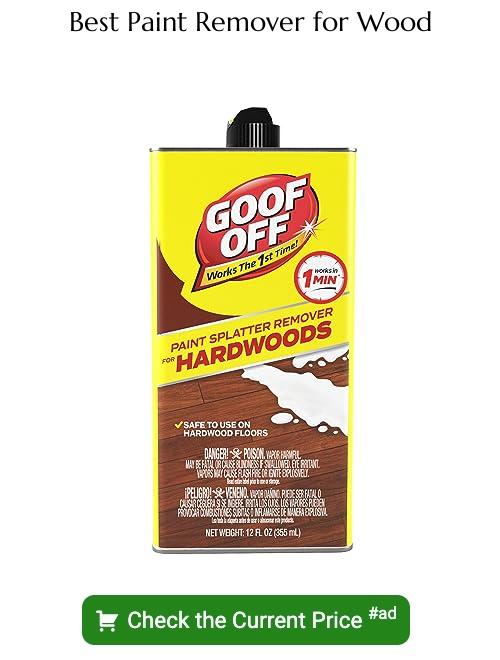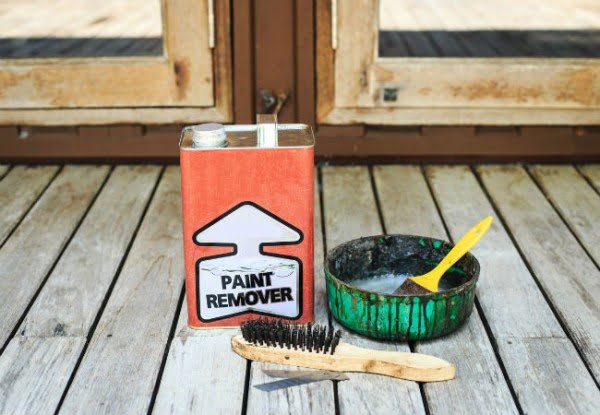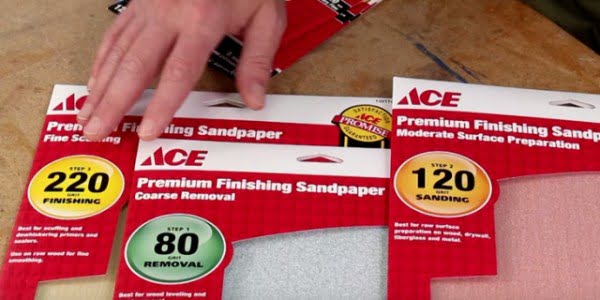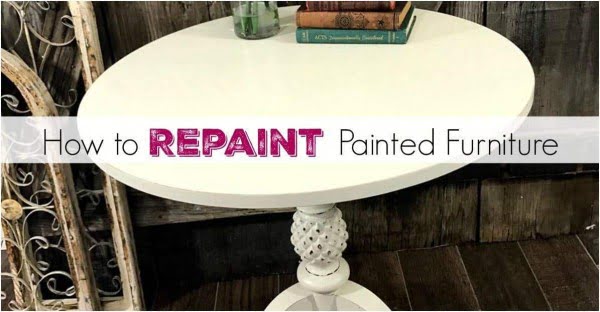Last updated on
Our complete guide will show you how to remove paint from wood in most cases. If you’re not sure where to start – this is the place.
There are times in home remodeling or decor touch-up projects when you need to get rid of old paint from wood. Be it an old door, cabinets, or furniture – you need to get it off before you apply a new coat of paint.
How do you do it? This guide will explain what tools you need, what materials to use, and the exact steps you need to take to tackle your paint removal project.
Before you even plan stripping paint, you need to know first what kind it is. We have different techniques for each type of paint.
To make it easier, we’ve also covered several cases of wood where the paint is on (floors, decks, cabinets, furniture, and so on). Finally, we go over the tools and their application.
Table of Contents
Paint Scraper Tools
Paint remover solutions (especially chemical-based) are effective and make it easy to scrape the paint off wood. However, there’s always the hazard involved when dealing with chemicals. The issue is partly alleviated with natural removers but they aren’t as effective.
Using a good scraper tool, on the other hand, can greatly improve your efficiency. In fact, in many cases, you can scrape it off solely mechanically.
Types of Paint Scrapers
Any paint removal project will require at least a couple of tools. These might be:
- Putty knife – the most basic scraper that’s widely used to scrape layers of paint. It’s not as effective as some other tools, but it’s readily available and can be enough to scrape chipped paint, small remnants, or a layer of paint.
- Wire brush – used to finish off paint removal. It’s ideal to scrape that last paint from wood.
- Multi-tools – several multi-purpose painter’s tools exist to ease all things that relate to painting (including removal). These tools have decent blade scrapers which allow you to scrape paint in several layers. They are equipped with multiple size and shape blades to make accessing awkward places easier. They are great for working with painted furniture too.
- One edge scrapers – these tools are made to produce results. A sharp (often carbide) blade and a good grip make them ideal to scrape that paint right off – even if it’s well dried at several layers.
- Electric scrapers – all of the above tools are manual. Electric scrapers give you the automation and much faster results. There are a few types of electric tools too: oscillation, disc, and power drill attachments.
Infrared Paint Remover
A more advanced way to remove paint from wood is an infrared remover. This device uses infrared rays (as the name suggests) to break the bond between the paint and the wood surface. To put it simply, the device heats up the surface below the paint making it chip off easily. Then it’s only a matter of using a scraper to scrape the paint off.
Granted, an infrared paint remover is not ideal in all situations.
Best Paint Stripper for Wood
There’s no one best paint remover solution for all situations. However, there are clear top options depending on the age, the number of layers, and condition of the paint on wood. These are the recommended paint strippers:
- Citri-Strip
- Smart Strip
- Jasco Remover
- Dumond Peel Away
Soy Gel Paint Remover
Soy gel is an industrial-grade paint remover powerful enough to remove multiple layers in one application. Made from soybeans, the solution is much safer than the chemical-based counterparts.
Here’s how it works:
- Scrape off any old chipping paint.
- Apply a layer of soy gel paint remover.
- After about 20 minutes the paint starts to bubble up – scrape it off with a scraper.
Smart Strip Paint Remover
The Smart Strip paint remover is a water-based paint stripper paste that forms a peel-able layer on the surface. After applying the paste on paint, you can peel it away. It works to remove multiple layers.
How to remove paint from wood with the smart stripper:
- Apply the paste on the painted surface by brush.
- Leave it on for 3 hours. If it hardens, apply another coat and let it sit for 30 more minutes.
- Peel it off with a scraper.
Lacquer and Varnish Strippers
Varnish or lacquer is a protective film that seals the surface of the wood. Thus it can be easily stripped off. Most paint strippers can get the varnish off the wood. So you can use most of the removal techniques as you do with paint:
- Apply stripper and wait for it to lift the varnish.
- Scrub it off the wood.
- Finish it off with fine sanding if needed.
Alternatively, varnish can be removed by sanding the wood. Albeit, this method can damage the wood more easily.
Natural Paint Removers
Some products are made of natural ingredients and are chemical-free. They are safer to use and are environmentally-friendly. The only caveat is that they aren’t as powerful and effective.
What are they?
- Soy gel paint removers
- Citrus-based paint removers
- Baking soda
How to Use a Paint Stripper
These are the general guidelines that will help you to get a hang of using a paint stripper for all your paint removal projects. We will go into more detail on a case by case basis in this guide.
Preparation:
- Always use protection – goggles, respirator mask, gloves, old clothes.
- Always cover the surrounding area and objects with a tarp.
- Familiarize yourself with the manufacturer’s instructions carefully.
Paint removal:
- Prepare the surface by cleaning and drying it.
- Remove any shipped or peeling paint with a scraper or a wire brush.
- Apply a coat of paint stripper according to instructions.
- Wait a required time – usually until the paint bubbles or lifts.
- Scrape it off using a paint scraper.
Additional steps for paint remnants:
- If there are some paint left after using the stripper try scraping it off with a scraper first.
- Remove any stubborn paint with a fine-grit sandpaper.
Important: Make sure you remove all stripper residue before applying a new coat of stain and paint.
DIY Homemade Paint Remover

Most commercial paint removers are chemical-based and require high precaution to handle. If you don’t want to take the risk or want to save on buying a remover, you can still make one yourself. This will not be as effective but it might be just enough if you’re not dealing with a difficult case. Here are a few recipes to try.
Vinegar Paint Remover
This recipe is easy and harmless – good enough for easy projects.
- Heat up some vinegar in a bowl.
- Using a stiff brush, apply it on the painted surface.
- Let it sit and soak in for 15 to 30 minutes.
- Scrape the softened paint off with a scraper or a wire brush.
If there are several layers of paint, you will most likely need to repeat this process for each layer several times.
Soda Paint Remover
You can get a bit more effective remover by making a paste from washing soda. Here’s how:
- Take a bowl of room-temperature water.
- Add washing soda, spoon by spoon continuously stirring it.
- Keep adding it until the solution becomes thicker and turns into a white paste.
- Apply this paste on the painted surface.
- Let it sit for 30 minutes.
- Scrape off the paint with a scraper or a steel brush.
Borax Paint Remover
The third recipe is the most effective and takes more ingredients:
- Mix 2 cups of warm water with 1 cup of borax, 1 cup of ammonia, and 1 cup of soda.
- Mix it all into a paste.
- Apply the paste onto the surface.
- Let it sit for 30 minutes.
- Scrape off the paint with a scraper or a steel brush.
Homemade Wood Stain Remover
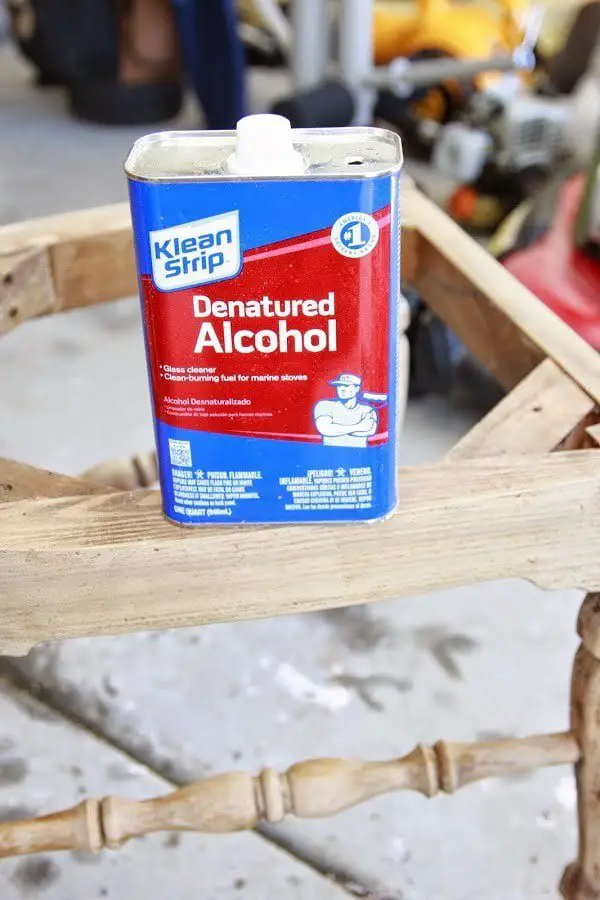
The wood stain goes deeper into the surface of the wood so it’s not so easy to remove with a homemade solution. Some people have had success by rubbing it off with denatured alcohol. It’s not a guaranteed option but you may try it before resorting to a commercial paint remover.
How to Get Paint off Wood without Damaging
The key to removing paint off wood safely and without damaging the surface is testing first. It depends on how much of the wood finish you want to leave intact. Stripping the wood entirely requires less precaution than trying to save the finish.
Take it one step at a time:
- Try scraping the paint lightly with a plastic putty knife. Minor drips of latex paint can be easily removed simply by doing this.
- Test any solvent you try on a very small area and see if it’s not doing damage to the finish.
- Use mild solvents first. Water, mineral spirits, vinegar, baking soda, borax, acetone, denatured alcohol – in that order.
- Resort to commercial paint strippers and sanding only if you don’t want to save the wood finish. These methods will certainly strip the wood of every layer of it.
How to Remove Paint from Wood by Paint Type
It all depends on what kind of paint is on the wood you want to strip. Let’s go over the popular types and their techniques.
How to Remove Acrylic Paint from Wood
Acrylic paint is water-soluble so it’s very easy to remove. It doesn’t even require a paint stripper. Here’s how:
- Use a water-soap solution and a cloth to wipe off acrylic paint from wood.
- Scrape it off with a putty knife.
- If there’s any stubborn dry paint left, use denatured alcohol to remove it. Be careful with painted wood so you don’t damage the surface.
How to Remove Latex Paint from Wood
Latex paint is the easiest type of paint to remove from wood. You can easily do it with any paint remover, but you may not even have to resort to it.
These are your options to remove latex paint:
- Rub it off with denatured alcohol.
- Use a vinegar, soda, or borax based homemade removers.
- Use a heat gun or an infrared remover to soften the paint on the surface and scrape it off.
How to Remove Oil Based Paint from Wood
Oil-based paint is a bit more difficult than some other types of paint (for example latex) because it gets deeper into the surface of the wood. This means sanding is inevitable.
Your options to remove oil-based paint off wood include:
- A paint stripper capable of removing oil-based paint.
- Mechanical removal, such as sanding.
In most cases, you will have to use both of these options to get the paint completely off the wood.
How to Remove Spray Paint from Wood
Whether you have a piece of wooden furniture that was spray-painted, or some spray mist has gotten on it, you can relatively easy rub it off. Most spray paints will give out to basic acetone solvent:
- Soak a piece of cloth in acetone.
- Rub the spray paint until it comes off.
- You may need to do this in several rounds.
Tip: put the cloth over a putty knife to get more pressure than your bare hands if needed.
How to Remove Shellac from Wood
If you have any antique furniture or an old door you may be dealing with shellac paint finish. This was a popular wood finish at the beginning to mid of the last century. So how do you remove it?
- Similar to latex, shellac can be easily removed by rubbing denatured alcohol.
- Apply a coat of it and let it sit in a few minutes.
- Rub it with a cloth.
- If needed, use a wire brush for better scraping.
- Finish it off with a cloth.
- Sand before applying a new coat of finish.
How to Remove Chalk Paint from Wood
If you want to remove chalk paint from wood, the action you need to take depends on how it was put on in the first place.
- If the furniture was chalk-painted without sanding, you can simply rub it off with a soggy sponge or cloth.
- If it was sanded first, you may need to use a mild solvent. Try soap, baking soda, or mineral spirits.
- If all else fails – sand it.
How to Remove Lead Paint from Wood
If you live in a new home, lead paint is not an issue (it was banned for home use in the US in 1978). But if your home was built (and painted) before that time, you may still have walls, doors, or floors painted with lead paint. This may also be the case if you get an old piece of painted furniture in a thrift store or a flea market.
Whatever the case, if you suspect you may be dealing with lead paint at all, you have to take extra precautionary measures to minimize health hazards. It’s out of the scope of this guide, but you can find a great guide on removing lead paint by Family Handyman.
How to Remove Paint from Wood without Chemicals
You might be able to get the paint off wood by simply scraping it with a scraper. This would only be possible if there was only one layer of paint, and it was not aged. When doing this, scrape the paint across the wood grain – be careful not to damage the wood.
This is a mechanical way to remove paint and it takes a while to do it. Work slowly, in careful scraping motions.
The biggest advantage of this method is, of course, not having to use dangerous chemicals or power tools. Albeit it will not be the best option in many cases.
How to Remove Paint from Wood without Sanding
You have three options to remove paint without using sandpaper. You may want to avoid sanding if you’re afraid you might damage the wood, or if you don’t want to do the work involved.
These are your options:
- Use a heat gun to heat the paint on the surface and then scrape it off. You might have to use denatured alcohol or mineral spirits to finish off the remnants of paint.
- Use a paint stripper to remove the paint and one of the techniques already covered in this article (or any that come next).
- Use an infrared paint remover in a similar way as the heat gun. It follows the same technique only using infrared rays to heat the paint.
How to Remove Paint from Stained Wood
You may want to do it in one of the two ways:
- Remove paint only and leave the wood stain; or
- Remove the paint and stain altogether.
Your choice of the paint stripper and removal technique depends on which way you want to go.
- Leaving the wood stain intact requires more effort on your part as you have to be careful and work the paint only. This means you have to start lightly and increase your effort in small steps.
- Removing paint and stain needs only the right paint stripper. Choose any method from this guide.
Best Way to Remove Stain from Wood
Removing wood stain requires surface preparation and a stain stripper solution. This is because the stain is used to soak in and treat to protect the surface. So a stripper would have to be applied to soak into the surface and remove the bond between the wood and the stain. Here’s what you need to do:
- Get a wood stain remover.
- Apply a layer of the remover according to the directions on the package. These will tell you the thickness and time needed to soak it in.
- Wait the required amount of time before starting to remove the stripper.
- Use a paint scraper to remove the first layer of the stripper that will come off with the stain.
- Next, proceed with a steel scrubber for wood.
- Many times this will be enough to remove the stain. If there are any imperfections left, move on with the sandpaper.
- Start with higher grit sandpaper, moving on to the lowest as long as there is any remainder of stain or stripper left. Be careful not to damage the wood.
Take precautions as you follow this process, especially if you’re using a chemical stain remover. Do it outside if possible, otherwise, work with windows open in a well-ventilated space. Use goggles, a respirator mask, and gloves. Make sure to cover the floor and furniture to avoid getting any remover solution on them.
What Grit of Sandpaper Should You Use for Wood
We like this idea brought up by Popular Mechanics that says you only ever need 3 types of grit for sanding wood. The lower the number, the more coarse the sandpaper is.
To remove the paint you need lower grit sandpaper, so 120-grit will do most of the time. If you need to really dig into the layers of paint, have 80-grit sandpaper ready. Finishing off the remaining paint can be done with fine sanding at 220 grit.
How to Remove Paint from Wood Trim
You can have two case scenarios with removing paint from wooden trim. For one, you want to remove drips of paint that have been left after painting a wall. The second possibility is to strip the trim of paint entirely. Let’s go over these cases separately.
Remove Dried Paint Drips
This is an easier situation to be in, especially if the paint isn’t aged much. For this you may not need a paint remover at all – try using denatured alcohol. Here’s how to remove latex paint:
- Soak some clean cloth in denatured alcohol.
- Rub the paint drips until they come off.
- Dry the wood trim with a clean cloth.
If the paint doesn’t come off as easily as expected (oil-based paint comes off more difficult), try this:
- Use low-grit sandpaper to sand the paint. Be careful not to overdo it and damage the wood surface. Sand it just enough for it to start to come off.
- Soak a piece of cloth in a mineral spirit and rub the paint off.
- Dry the trim with a clean cloth.
Strip Paint off the Wood Trim and Baseboards
To strip the paint entirely, you will need to use a paint remover. This is the process to follow:
- Cover the wall and floor surrounding the trim with a chemical resistant tarp.
- Apply the paint remover in a layer on the trim according to directions. Note the thickness and time needed to soak it in.
- The remover should soften the paint enough for it to be scraped off with a scraper.
How to Remove Paint from Wood Furniture
Getting paint off wooden furniture doesn’t differ much from other types of wood. You can use any method covered in this article successfully. However, there are some important points to keep in mind when working with furniture:
- You will need to work on surfaces at different angles – only use liquid stripper on horizontal ones. Use the paste or a gel on vertical surfaces and at an angle.
- Some spots will be hard to reach, so use a small coarse brush or a toothbrush to reach them.
- Use a metal scraper to remove non-bonded paint.
- Use fine-grit sandpaper to remove the remnants of paint.
Best Way to Remove Paint from Wood Deck
So your deck needs a new coat of paint. It’s a good idea to give it a facelift. The first thing you will need to do is remove the old paint. Here’s how.
Preparation:
- Remove the furniture and other stuff from the deck – leave it entirely empty.
- Brush off any leaves or dirt. Power wash it for good measure. Then let it dry.
- Make a little plan of how you will be removing paint in small sections. Start from far ends of the deck, and move towards the stairs.
- Make sure you know what kind of paint the old coating is. Latex paint will be the easiest to remove. Oil-based paint will require extra work. And you will need to take extra precautions if it’s lead-based.
- Pick the right stripper solution. For decks, a spray remover is ideal because it allows you to cover a wider area faster. Gel or paste strippers will need you to brush it on bit by bit. Try using natural and no-VOC strippers if possible (because you will power wash it down to the soil).
Removing paint:
- Scrape off any old chipped paint with a scraper or a wire brush.
- Apply the stripper solution. Work in small sections as planned.
- Let it sit for the time required as per the manufacturer’s instructions. Usually until the paint starts to bubble up and lift.
- Power wash the paint off the deck.
- Scrape the remaining paint (especially if it’s oil-based).
- Sand the deck of the stubborn paint with an electric sander. Use fine-grit sandpaper first and try to affect as little wood surface as possible.
- Seal and stain the wood before applying a coat of paint.
What do you do if you don’t have a power washer available? Use any paint scraper tool available – ideally an electric one to make things go faster.
Removing Deck Paint with Sander
Sanding can be used to remove old paint from your wooden deck without resorting to stripping solutions. It’s a more straightforward way and it might actually be easier if you have a good electric sander handy. However, do keep in mind that sanding will take a lot of the wood surface off together with paint – especially if the paint is oil-based.
Removing Paint from Hardwood Floor
You’ll get into situations where paint gets splattered on your precious hardwood floor. Even when using a tarp to cover the floor, some dripping is bound to happen. What do you do then?
Here’s an easy way to remove paint from hardwood:
- Latex paint comes off by rubbing it off with denatured alcohol.
- Oil-based paints will require some extra work. Use fine-grit sandpaper to carefully lift the paint. Then rub it off with mineral spirits.
How to Remove Paint from Cabinets
Removing paint from wooden cabinets is no different than any other type of wood. So any method will do. There are only a few specific points that can help you with this project:
- Remove the doors and drawers from the cabinets before starting the project.
- Cover the surroundings in a tarp.
- Apply your chosen paint stripper to the cabinet doors, drawers, and the cabinets.
- Wait until the paint lifts as per instructions.
- Scrape the paint with a scraper. Use a small scraper to access all corners.
Always wear protective gear and work in a well-ventilated space. If you have to work in closed space (such as a bathroom), and you can’t remove the cabinets (if they are built-in), use a natural stripper solution.
How to Scrape Peeling Paint from Wood
Any paint removal project will begin with scraping the peeling paint from wood. This is a fairly straightforward step where you will use the basic scraping tools – a putty knife and a wire brush.
How to do it:
- Use a wire brush to scrape off all obviously peeled paint.
- Lightly scrape the chipped and peeling paint with a putty knife along the grain.
- Scrape against the grain to get any loose paint.
- You may need to use a small blade scraper to get to small corners and edges.
Painting Over Old Paint on Wood
If the old paint is still good and doesn’t have any chipping, you may be able to paint over it in a new coat. It’s important to know the type of paint that was used before and use the same kind this time around too.
Much of the same painting techniques apply:
- Prepare the surface by sanding it. Do not worry, you do not need to remove the old paint – sand it just enough to make the surface coarse.
- Apply wood filler where needed.
- Apply a new coat of paint. Always paint along the grain.
- Let it dry.
- Apply additional coats if needed.
